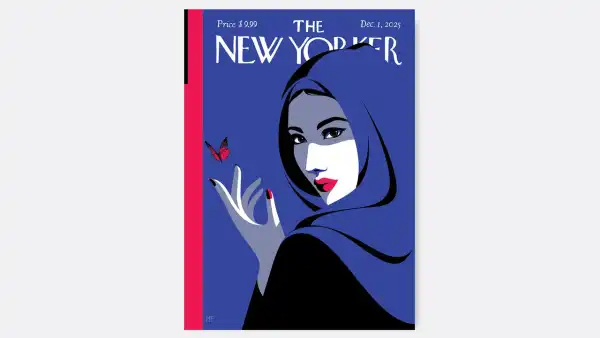
What is a newspaper? Though a few decades ago the answer might have been obvious, it’s no longer so easy to say. Newspapers have long been about more than just news; they appear less and less on paper and, despite their geographically inflected names, aren’t firmly rooted in any particular place. The New York Times is probably the first thing that comes to mind when you think of an old-fashioned extra-extra-hear-all-about-it newspaper, but it’s also the poster child for the medium’s metamorphosis. The aim of the Times, according to its last available annual report, is to “be the essential subscription for every English-speaking person seeking to understand and engage with the world.” The publication counts subscribers in two hundred and thirty-six countries and territories, and of its 8.8 million subscriptions in 2021 more than a million were international. (Eight million were digital-only; domestic print circulation hovered around three hundred and forty-three thousand on weekdays and eight hundred and twenty thousand on Sundays.) You might once have read the paper that covered your local community, and perhaps also your region or country. Now, though, the only thing that unites the Times’ disparate community is language, specifically English, and a version of that language tightly regulated by a famously stringent style guide for telling “All the News That’s Fit to Print” (or to post).
As the paper changes—to address new realities, like cryptocurrency, but also to cover new communities, like whatever Gen Z is—that language grows, quickly. You can watch that growth in real time with the Twitter bot @NYT_first_said, which was created about six years ago by the engineer and artist Max Bittker. The account does exactly what it says on the box: it tweets whenever the Times uses a word that it has never used before. Or, to be more precise, the bot posts when the program trawls through the Times’ Web site and finds a word—uncapitalized (to avoid names, whose novelty isn’t particularly notable) and without certain special symbols, such as a hashtag or an at sign—that isn’t present in the paper’s extensive digital archive, which dates back to the Times’ foundation, in 1851. Bittker’s bot scans about two hundred and forty thousand words each weekday (about a hundred and forty thousand on a weekend) and ends up tweeting out between a hundred and sixty and two hundred words per month.
The project was inspired by Allison Parrish’s @everyword bot, which, in the course of seven years, tweeted out a vast, albeit selective, swath of English words. (The final tally was 109,157, a daunting figure but still only about a sixth of the O.E.D.’s total of more than six hundred thousand.) Everyword broadcast single words, like dictionary entries without the definitions. But that lack of context inside the tweet left greater freedom for building context outside it. “It became this multiplayer game of people celebrating certain words,” Bittker told me. The stripped-down format also foregrounded the word itself, inviting you to adopt the focus of a modernist poet, or a linguist, and let your imagination take it from there. A single word can be powerfully evocative—think of Sappho’s dreamy fragments (“mythweaver”) or the vividness of a brand name (“OBEY”)—all the more so for standing alone. “Every word has cultural baggage,” Parrish wrote, of her project. “What would happen if we systematically exposed ourselves to that baggage?”
@NYT_first_said similarly publishes its finds with no context, yet Bittker created another bot, @NYT_said_where, which autoreplies with the sentence where the word appeared and helpfully links to the article. The words unfurl like a ticker-tape distillation of what’s new in the mainstream. Sometimes it’s news: “shithole” went viral when former President Donald Trump said it in 2018; “shrinkflation” popped up this past August; “tripledemic” made its début in October. Sometimes it’s our linguistically creative response to that news: “covidivorce,” “coronababies,” and “cottagecore” all appeared in March, 2020. And there is also a rich, risible language of conspiracy that has smuggled itself into our daily conversations, such as “baloneyvirus” or, for the Finns out there, “jauhojengi” (literally, “flour gang,” a word that some think was used by friends of the hard-partying Finnish Prime Minister to refer to cocaine). Sometimes it’s a neologism that perfectly expresses the spirit of the age: witness “billionairey,” from February, 2020.
Like all the bot’s finds, these are, to borrow a phrase from classical philology, hapax legomena, “words said only once” in the text of the Times, at least at the moment they’re tweeted. The Food section is responsible for many—the Style and Arts sections, too. For some people in groups that have been traditionally marginalized, getting mentioned in the paper can be a sort of recognition. “Hyperqueer,” to take one recent arrival, was much fêted by followers; it came in a T magazine article on Black queer artists. (Mere recognition, though, isn’t always enough: the paper’s coverage of trans issues has continued to be controversial, precisely for the context that the bot doesn’t see.) Other words reflect a concept or term that, for its untranslatability or panache, is deemed important enough to borrow from another language, such as “bolsonaristas,” mentioned this past January when the militant supporters of Brazil’s former President Jair Bolsonaro stormed their country’s capital. (Bittker told me that his most devoted audience is in Brazil, whose Internet culture he described as “both very pop, but also very weird.” Many of the bot’s most popular tweets have been Brazilian Portuguese argot.) “Being in the New York Times is this standard of notability,” Bittker said. But, for those whose lives had previously gone unremarked upon in the Times, reactions might range from a knowing eyeroll to a wistful nostalgia—for the time when a word was just your word, not yet a specimen pinned down for the consideration of the Times’ readership. A different kind of reader might be nostalgic for the days when the buttoned-up Gray Lady didn’t deign to discuss, say, “seggs,” a content-filter-dodging orthography for “sex” that’s employed by TikTokers.
Most fun, though, are the surprises, such as neologisms that make you scratch your head: “sandwichness” or “sleevage” or “corntastic” or (brace yourself) “dognoscenti.” There are, in contrast, very old words whose relevance is cause for thought, such as the theological term “omnibenevolent,” describing God’s perfectly good will, in a piece about the death of Pope Benedict. (“Multipope” appeared in the same context.) There are also some old words whose lateness really can’t be excused, such as “ecofiction,” which appeared for the first time in a profile of the writer Lydia Millet this past October. And then there are words that shouldn’t be words (I’m thinking of “nonsturdy”), or eminently good but not quite polite words, such as “dickishness,” used in a review of an Anthony Bourdain biography and subsequently changed to “coldness.”
That silent sanitization points to one of the ways in which @NYT_first_said shines a light on the obscure forces that regulate and police the Times’ language, which, as trivial as some points of style may seem, is inevitably infused with its politics. When the bot isn’t just tripped by a typo, it traces the paper’s ever-changing boundaries of decency and taste, signalling what is now acceptable but also, at least in this case, what goes over the line. Bittker built his app by modifying the source code of NewsDiffs, a now defunct site that tracked changes made to online articles in the Times and other major news outlets. A version of that project lives on in @nyt_diff, which reveals unmarked changes made to Times headlines and their accompanying abstracts after publication on the Web.
The pointillistic eclecticism of @NYT_first_said does tend to highlight the linguistic extremes—the novelties and the gags and the groaners. This could be seen as making a zoo of the Times’ language, turning it into an object of curiosity, a game, rather than a tool for communication, or playing upon the increasing quizification and Wordle-ism of the paper’s digital ethos. But the bot’s rigorous simplicity isn’t so much trivializing as philological: it’s built on the presumption that the language the Times uses is worthy of our attention, and of our scrutiny. That, at the end of the day, the Times actually is a kind of language, a shared, increasingly global English, aspiring, for better or for worse, to the almost encyclopedic, universal function of helping people “understand and engage with the world.” @NYT_first_said matters then, if only as the historical record of a paper expanding to include ever more of that world—including @NYT_first_said itself, which the Times reported on in 2019, prompting the bot to tweet its own name. It’s a flashing beacon from the far reaches of the paper’s ever-widening cultural empire.
The Canadian media theorist (and media personality) Marshall McLuhan described the newspaper as a mosaic, its many pieces assembled with the collaboration of many different writers, editors, photographers, and advertisers, and then cramped together on the page with porous boundaries between them. “With the speed-up of printing and news-gathering, this mosaic form has become a dominant aspect of human association,” McLuhan wrote, in “Understanding Media.” The mosaic form allows for “participation in process”—by the staff in the newsroom but also by the people from whose communities and lives new words emerge. That has become only truer in the Internet age, when the pieces of the mosaic have become smaller, the boundaries finer and finer; Twitter, itself a mosaic, is a porous interface between the journalists and the people they cover.
In the era not just of copy-paste but of scraping, aggregation, and Chatbot, the writer’s authority is on the wane, and @NYT_first_said does admittedly pulverize the products of authorship ever further into “content.” But the effect of scrolling through its lexical finds does more, I think, to reactivate our appreciation for how meaningful, and how interesting, and how funny words still are—words, which belong to all of us and none of us and always mean more than we know. Bittker sees his bot as an art project, in which language is his medium. “It’s a material that has a lot of really special properties,” he said. From the perspective of an artist-engineer, “there’s a lot of bang for your buck”: a word functions as a “nexus or conversion point,” evoking past experience and triggering unexpected connections in ways that no algorithm could predict. Words will always be news. ♦
Sourse: newyorker.com






